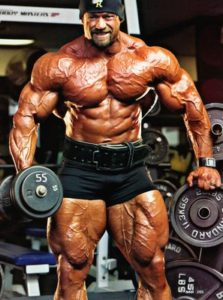Table of Contents

Body dysmorphic disorder (BDD) is psychological disorder in which a person is preoccupied with real or imagined defects in their appearance. The preoccupation typically involves one aspect of the body, but some people have multiple preoccupations with their body, hair or skin (Phillips, Menard, Fay & Weisberg, 2005).
*This post may contain affiliate links. As an Amazon Associate we earn from qualifying purchases.
Body Preoccupations

Every person at some point in their life can become preoccupied with a body part they want to change, including wanting more muscle, less body fat, fewer wrinkles and even wanting to change your nose profile or some aspect of your hair. But a person with BDD has an extreme preoccupation with this feature. In fact, in the Diagnostic and Statistical Manual of Mental Disorders Fifth Edition (DSM-5), BDD is classified as obsessive-compulsive disorders (OCD). Some of the common features between BDD and OCD include repetitive behaviors (checking in the mirror) and mental preoccupations such as comparing oneself to others over and over. The preoccupations with the different body parts are so extreme that these individuals may begin to have problems socially, with school or at work. Below is one example of a type of BDD and we will look at this type more closely to better understand how these preoccupations can begin to interfere with daily living. Remember, this is only one type of BDD. Other BDD includes some preoccupation with a flaw in some aspect of their physical appearance.
Male Athletes and Muscle Dysmorphia
 The most common body image disorder among male athletes is called muscle dysmorphia. The fact remains, many men in the general population express some dissatisfaction with some part of their appearance, but those with muscle dysmorphia have a more extreme preoccupation. They typically perceive oneself as being too physically small, lean and not having enough muscle. The key word is perceived because men with this disorder are often normal looking and others might not see the person as too lean or lack in muscle or tone.
The most common body image disorder among male athletes is called muscle dysmorphia. The fact remains, many men in the general population express some dissatisfaction with some part of their appearance, but those with muscle dysmorphia have a more extreme preoccupation. They typically perceive oneself as being too physically small, lean and not having enough muscle. The key word is perceived because men with this disorder are often normal looking and others might not see the person as too lean or lack in muscle or tone.
Obsessive Behaviors and Thinking
For persons with muscle dysmorphia, the desire to build muscle becomes such a preoccupation that they may engage in repetitive mirror checks, spending incredible amounts of time at a gym lifting weights, and comparing themselves to others. These behavior and mental foci can be anxiety producing for the person as the preoccupations grow. Some may develop problems in their relationships as a result of or miss work or family events in order to work out. Even worse, some can engage in very risky behavior and take steroids and other substances as a supplement to enhance muscle development or bulk. Some change their diets in such a way that it may be unhealthy. Most engage in over exercising to the point of developing injuries. In fact, most people with this disorder enter the medical system due to injuries of over use. Take a look at the video below.
The Hidden Side of Muscle Dysmorphia
Men who have muscle dysmorphia have an obsession with their appearance that may not be readily visible to others. This means they spend excessive amounts of time thinking about how they look. They generally perform repetitive, very time consuming and compulsive behaviors. In addition, men who have muscle dysmorphia tend to avoid other types of relationships because their preoccupation takes up much of their time. You might say they become “married” to their work out and exercise regime.
Unfortunately, this disorder can get easily overlooked because getting bigger and having more muscle and spending time at the weight room involves the same athletic behaviors that are common to others working out. Most coaches, and even friends and family might at first be pleased to see their athletes (or friend) training and exercising with great intensity. As a result, muscle dysmorphia often goes unnoticed as a problem because the behaviors are thought of as “normal” for athletes or others. Most often get compliments for their discipline and dedication and that is the silent part of this disorder. It simply can get overlooked by a coach or friend and others while the athlete remains in a terrible obsessive like a cycle. The anxiety for the person can be incredible but this is not typically seen by others. So, what would you look for if you were worried about yourself or someone having Muscle Dysmorphia? Answer the questions below as a guide.
Signs of Muscle Dysmorphia
Appearance
• Are you concerned about your appearance in such a way that it causes anxiety?
• Do you find yourself looking in the mirror multiple times a day?
Avoidance
• Do your relationships suffer due to preoccupation?
Avoidance
• Do your relationships suffer due to preoccupation?
• Do you miss work or school?
• Is your sex life affected?
Time
• Do you think about your appearance or wish you could worry about it less?
• How much time do you spend grooming?
• How much time are you at the gym? Is this causing problems in relationships?
Substance Use
• Are you taking steroids and other substances for muscle growth?
• Are you aware of any mood changes or side effects from taking these substances?
If you have concerns about this or are concerned about an athlete with this type of disorder you should assist them to see a sports medicine doctor and/or a psychologist. The best treatments are a combination of medical (medication) and psychological support.
Treatments
Psychological support typically means being in psychotherapy with a person trained to address mental health issues such as obsessive-compulsive disorder, anxiety disorders, and mood disorders. Treatments often revolve around addressing thinking patterns and reducing compulsive behaviors. Remember, the person with BDD usually feels like they have to engage in the behavior, such as building muscle, as a means to cope with anxiety. Thus, a cycle of thinking and acting must be changed. Medical treatments typically involve addressing diet deficiencies, side effects from substance use and medication treatment. It is common for persons with this disorder to have depression and suicide is a risk that needs to be addressed. For these reasons, it is not a disorder that should be ignored. The good news is there is a help and more and more healthcare professionals are recognizing the disorder.

